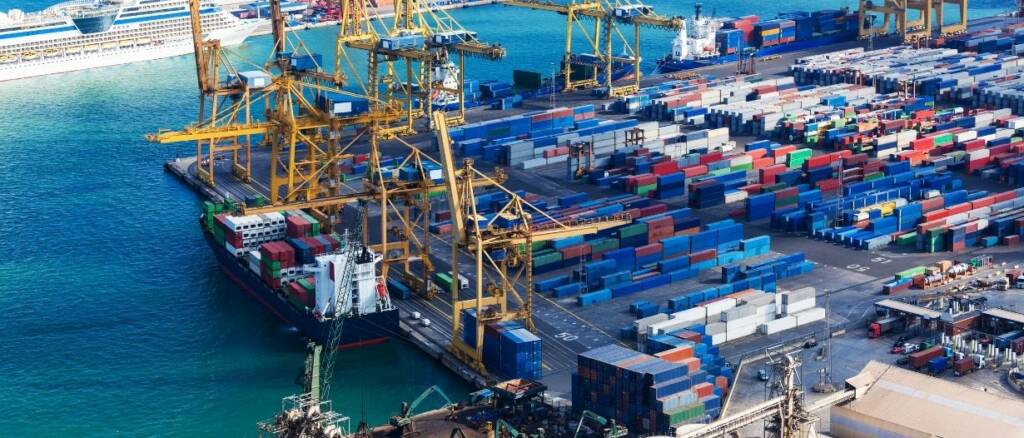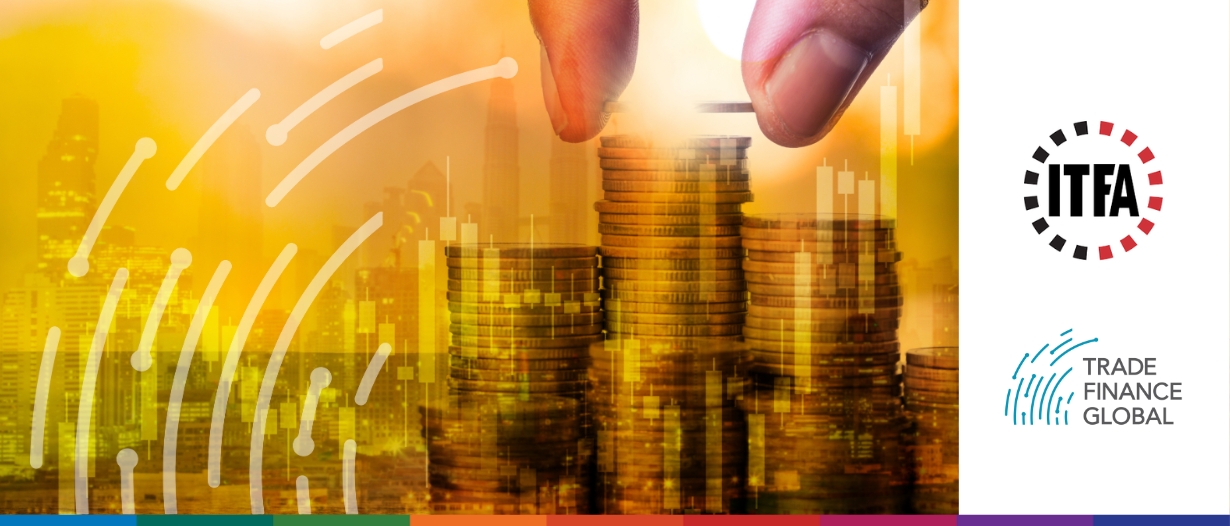Estimated reading time: 5 minutes
At the 49th Annual Trade and Forfaiting Conference held at ITFA Abu Dhabi, TFG’s Deepesh Patel spoke with Sean Edwards, Chairman of the International Trade and Forfaiting Association (ITFA), about some of the key themes emerging throughout the conference in a quickfire session.
Sustainability: A key topic for ITFA
Sustainability is a priority for ITFA but is approached from a slightly different angle compared to other trade associations. ITFA’s focus is on assisting banks’ efforts in reporting to regulators.
Edwards pointed out that, “The current state of the dialogue between the regulators and the regulated is not great.”
Uncertainty still remains, particularly for European regulators, regarding how exactly to monitor the space.
Currently, there is a lack of standardised measures for sustainability. There is no clear measure of how sustainable a bank is.
ITFA firstly attempts to promote this necessary dialogue, thereafter also seeking to produce data in order to validate the reporting standards that are going to be produced. According to Edwards, this is a priority project for ITFA in the year ahead.
Trade credit insurance: Trends that will shape the future
ITFA is very active on the lobbying and advocacy front for trade credit insurance. Important discussions were held at the conference regarding the relationship between Basel IV and trade credit insurance.
These conversations are important, as a recent survey conducted by ITFA indicated a substantial increase in the use of trade credit insurance.
Edwards said, “It is very often a silent partner in trade finance, but it’s incredibly important.”
Whether it is termed “non-payment insurance” or “trade credit insurance”, it is, according to Edwards, “a very important partner” for success in the sector.
According to Edwards, the new Basel regulations do not recognise specific important aspects of insurance, such as “they don’t recognise that policyholders have got a privileged position treating insurers as corporates rather than financial institutions.”
ITFA has achieved recent success in this regard in its advocacy in Europe through the insertion of the new CRR Article 506 mandating the European Banking Authority (EBA) to investigate the impact on credit insurance.
This would be the subject of a forthcoming report to determine whether there should be differential treatment accorded to insurers.

Digitalisation: Distribution and new actors
When it comes to digitalisation, ITFA has seen one significant trend recently: distribution.
Edwards said, “So, firstly, it’s about creating the digital instruments that are easy to distribute and that are attractive to non-bank investors.”
The ITFA Trade Finance Investment Ecosystem (ITFIE) was formed based on the recognition that non-bank investors wanting to buy trade assets often face significant obstacles spanning issues such as education, documentation, and the ability to access ratings.
In addition to ITFIE, ITFA organised the Trade and Investment Finance Forum. The aim was to engage non-bank investors, understand their needs, and explore ways to support their objectives.
This would enable banks to broaden their asset distribution beyond just other banks.
Edwards noted the status quo situation was becoming an “ever-decreasing closed loop” and required changes to address one of the causes of the increasing trade finance gap.
Edwards said, “We need new blood in there, and that’s what we [ITFA] are trying to do.”
Reducing the trade finance gap: Actionable efforts that can be made
Addressing the trade finance gap is another aspect related to the matter of bringing new investors into the space.
ITFA is looking to make trade instruments more attractive to non-bank investors. One instrument for doing so is through digital promissory notes and bills of exchange.
Relatedly, as such mechanisms reduce the costs of trade finance through growing digitalisation, along with an increasingly liquid secondary market, the sector would be better placed to begin addressing the trade finance gap, now standing at approximately $2.5 trillion.
Edwards said, “It won’t be the end…but it will be the beginning of the end, we hope…”
Partnerships with multilateral lending institutions
According to Edwards, communicating key information about the sector and serving educational purposes in collaboration with multilaterals is critical. This communication is key to working collaboratively with certain emerging markets.
ITFA is currently working on the Swift Loan, a simple loan format widely used in Africa. ITFA is seeking to standardise it, making it more easily understandable and increasing liquidity availability in that market.
Partnering with multilaterals to assist in conveying messages related to these efforts is a crucial next step.
Edwards said, “I hope it’s going to be mutually beneficial…it’s an open door both ways.”

Trade dynamics in the MENA region
ITFA has a MENA Regional Committee, which hosted a session with Etihad Credit Insurance (ECI) and the Abu Dhabi Export Office (ADEX).
More broadly, ITFA has noticed that the region is particularly interested in digital negotiable instruments.
ITFA had a partnership with the Abu Dhabi Global Market (ADGM) financial centre and would shortly sign an MoU together looking at facilitation and encouragement of digital trade.
Edwards said this was an area where “we [ITFA] have the expertise and they [ADGM] have the clout.”
Furthermore, Edwards felt that the digitalisation of trade was an area where ITFA is “uniquely placed to deliver [on].”
The key themes that can be drawn from the 49th Annual Trade and Forfaiting Conference held at ITFA Abu Dhabi indicate that the transition towards a greener, more accessible, and digital trade future is swiftly progressing.
Strategic partnerships to increase access in the sector will be key to driving future progress in key priorities such as net zero and reducing the trade finance gap.
























